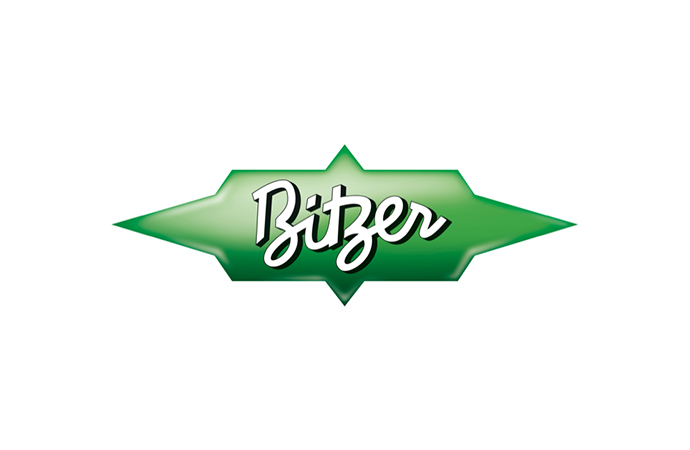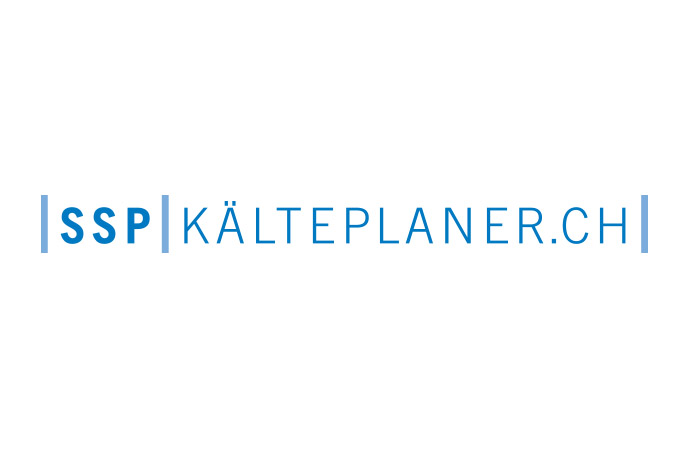2014 has been another exciting year for R717, from policy developments to technology advancements to events and new installations delivering incredible efficiency. ammonia21.com recaps the highlights in ammonia refrigeration in 2014.

Twas the night before Christmas and all the engineers were still,
Looking forward to ammonia21’s annual newsreel.
What were the new products of 2014,
What were the trends that could be seen?
So here below without further delay,
The year's highlights - in time for your holiday!
Ammonia is a hit at 2014 events
ammonia21.com reports on industry perspectives and trends regarding ammonia based industrial refrigeration systems presented by key manufactures during the highly successful ATMOsphere America 2014 event, which took place on 18-19 June, in San Francisco, California. Reducing refrigerant charge remains top of the agenda, alongside improving efficiency and keeping costs low. In part 1 of ammonia21.com’s ATMOsphere reporting main case study findings presented by Azane, Colmac Coil and Alfa Laval are discussed.
Chillventa 2014 kicked off on Monday, 13 October 2014 with a congress “for experts by experts”. The event hosted top presentations by international speakers on the latest developments in heating, cooling and refrigeration. According to several presenters industrial ammonia heat pump applications have the potential to revolutionise the energy market. Other presentations looked at heat pump markets worldwide, highlighting growth in China, France and the US, where the market share has in some cases increased to up to 18%.
Ammonia safety in China was one of the major themes discussed at Gustav Lorentzen 2014 held in Hangzhou, China. Two plenary lectures were dedicated to ammonia safety, analysing common accident causes and ways to ensure future accidents are prevented. The lectures emphasised the importance of education and lifelong training as well as enforcement of safety rules as key measures to ensure the safety of refrigeration operations.
The ATMOsphere Network Paris held on 17 July in Paris as a side event to the Montreal Protocol meeting provided an update on the conversion of the Chinese room AC sector to hydrocarbons. In addition, market trends for natural refrigerants and examples of their use in commercial and industrial refrigeration, were highlighted by Mayekawa, Advansor, AHT and shecco.
Held on 23-26 March in Nashville, Tennessee, the IIAR 2014 Industrial Refrigeration Conference provided participants with an update on US policies affecting ammonia facilities. Presentations by Lowell Randal, IIAR’s Director of Government Affairs and Jeff Shapiro, President of International Code Consultants outlined several key issues and recent regulatory changes.
2014 marks the 16th Seafood Processing Global exhibition, organised alongside Seafood Expo Global, in Brussels Belgium from 6 -8 May. ammonia21.com reporters attended the trade fair, which is designed promote machinery and equipment relating to the fisheries industry, to discover new trends and technologies within the industry, using ammonia as the refrigerant. Several new companies featured alongside those reported on in 2013.
Popular policy articles among ammonia21.com readers
Progress was achieved at the 26th Meeting of the Parties (MOP) to the Montreal Protocol held on 17-21 November in Paris with close to 200 countries able to agree to hold informal discussions on HFCs in a structured manner. In addition, an agreement was made to hold an extraordinary meeting in April 2015 together with a workshop to discuss the management of HFCs.
Today’s (14 April 2014) vote by the Council of the European Union approving new F-Gas rules in the EU, together with the European Parliament’s endorsement in March 2014, formally seals the ‘deal’ for the introduction of new F-Gas measures in the EU as of 2015. Within the next decade, a number of new measures restricting the use of HFCs will be phased in, with HFC bans in new equipment expected to have the most immediate effect on the introduction of natural refrigerants.
In April 2014 the Chinese State Administration of Work Safety launched an initiative to improve workplace safety in those companies using ammonia as a refrigerant, requiring all companies that do not meet current safety standards to comply with regulations by the end of November this year. As a result, provincial governments have begun tightening controls to ensure the companies concerned take corrective action. These steps will pave the way towards safer use of ammonia refrigeration in China, vital if the country is to meet rapid growth in the cold storage industry using natural refrigerants.
Developing systems based on natural refrigerants, especially ammonia, extending their use nationwide and enhancing training for technicians were among the conclusions and part of the resolutions of two conferences co-organised by the Russian Ministry of Environment at the end of last year 2014 is expected to see significant progress in overcoming regulatory barriers to the use of ammonia and work on technical and educational standards.
In July 2014, Australia became the world’s first developed nation to repeal carbon laws that put a price on greenhouse gas emissions (GHGs), including the carbon equivalent levy on HFCs. In order to investigate the likely impact this action will have on the use of natural refrigerants, ammonia21.com interviewed several HVAC&R experts based in Australia.
Ammonia refrigeration installations and products offer big savings
In the past, the idea of Metro Inc. –a Canadian supermarket chain- experiencing rapid growth while at the same time keeping their carbon emissions minimal would have seemed a fleeting fantasy; but through the installation of an ammonia system, Metro Inc. has been able to facilitate higher growth while keeping their environmental integrity. With that, a new industry standard had been set.
PIMA’s facility in Heredia, Costa Rica, has been equipped with the first CO2/ammonia cascade system installed in Central America. The project, which complies with the Costa Rican Government’s targets to have a net zero carbon footprint by 2021, promises to act as a benchmark for future refrigeration system installations throughout the region.
Golden State Foods (GSF), one of the world’s largest fast food restaurant suppliers, has installed an ammonia-CO2 cascade refrigeration system in its newly opened LEED-certified distribution centre. The new facility marks a milestone in the company’s goal to move towards greater environmental sustainability and will act as a benchmark for future and existing facilities.
A cheese factory from “Compagnie des Fromages”, part of the Bongrain group, located in Vire, France, dramatically reduced energy costs and CO2 emissions by installing an NH3 screw compressor from Vilter, part of Emerson Climate Technologies Group. Cofely Axima, a company belonging to the GDF Suez Group, was commissioned to develop the innovative heating and cooling installation.
Johnson Controls has installed a state of the art CO2 cascade ammonia system on a fishing vessel based in Holland. The company Cornelis Vrolijk, already uses CO2 as a secondary refrigerant for fish processing and cold storage on five of its vessels. The new system has enabled freezing 3-4 times faster compared to R22 systems, fuel cost reduction, weight reduction and a future proof solution with regards to the F-Gas Regulation.
The use of ammonia will continue taking a market dominating position in the next 7 years in Europe, with natural refrigerant CO2 growing in importance for increasingly popular cascade solutions reducing the NH3 charge. This is one key result from two industry surveys conducted by market development company shecco, and presented in the latest GUIDE Europe 2014, as well as at the first-ever ATMOsphere event in Asia.
Experts in project design, planning and support for commercial and industrial refrigeration applications, SSP Kälteplaner AG has used innovative technology to combine existing ammonia refrigeration systems into a centralised system with energy efficiency and cost benefits for the Block Group. Other projects by the company have involved supplying a refrigeration system and cold rooms with waste heat reuse, and designing an ammonia booster to operate at the freezing stage as well as at the medium pressure stage.
The Refrigerating Specialties Division of Parker Hannifin Corporation, a global leader in motion and control technologies, has launched two new products for the industrial refrigeration market. The Cartridge Safety Relief Valve (CSRV) reduces maintenance costs while ensuring the safety of the system, and the wire-based level probe (HBLT-Wire) provides a one-part-fits-all solution to level measurement and can reduce installation costs.
DSI, a Danish manufacturer of automatic and manually operated freezers for onshore and marine applications, showcased its new Horizontal Plate Freezer model at the Brussels Seafood Expo 2014. The redesigned product offers instant freezing capability and is made with a galvanised steel frame and hydraulic rams that ensure stable and even plate pressure.
BITZER, the specialist in refrigeration compressors, has developed a new modular ammonia compressor unit for industrial applications. The ammonia compressor pack (ACP) is available with a capacity range of 500 to 3,600 kW and includes all basic components like oil cooler, oil separator and unit controller. The ACP celebrated its premiere at the IIAR trade fair in Nashville, Tennessee in March 2014.
Two GEA Grasso reciprocating compressors employing ammonia (NH3) as the refrigerant are used in the world’s first CO2- neutral banana ripening facility, operating since 2011 by Chiquita Fresh Netherlands, in Gorinchem.
The Star Refrigeration Group, a leading supplier of industrial cooling and heat pump solutions using natural refrigerants ammonia and CO2, has launched US subsidiary Azane Inc. Set-up to meet growing demand for the Group’s low-charge ammonia “Azane” technology, which includes the Azanechiller and Azanefreezer, the subsidiary’s San Francisco office will act as a regional headquarters for Azane Inc.
MORE INFORMATION
Related stories









_1522327086.png)


